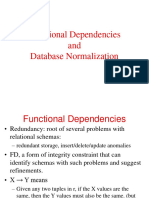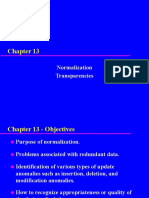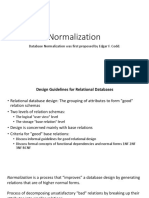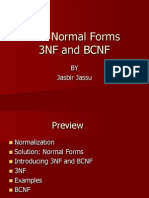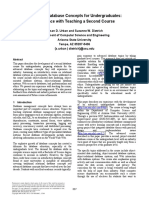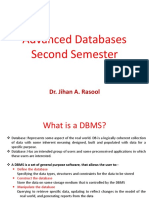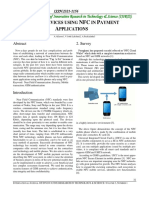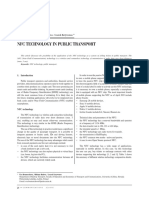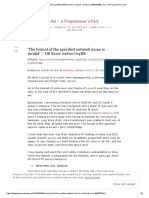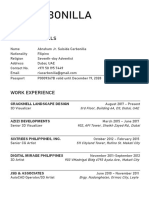0% found this document useful (0 votes)
65 views18 pagesLecture 2 Part 1 Normalization PDF
The document discusses normalizing a database table to Boyce-Codd normal form (BCNF). It begins by reviewing functional dependencies and normal forms. It then provides an example table with orders, products, customers, etc. and identifies functional dependencies. The table is normalized in steps to remove anomalies and get to BCNF. First it is decomposed to 2NF by removing partial dependencies on the primary key. Then it is further decomposed to 3NF by removing transitive dependencies. The end result is four normalized tables with no updating anomalies.
Uploaded by
Ahmed adelCopyright
© © All Rights Reserved
We take content rights seriously. If you suspect this is your content, claim it here.
Available Formats
Download as PDF, TXT or read online on Scribd
0% found this document useful (0 votes)
65 views18 pagesLecture 2 Part 1 Normalization PDF
The document discusses normalizing a database table to Boyce-Codd normal form (BCNF). It begins by reviewing functional dependencies and normal forms. It then provides an example table with orders, products, customers, etc. and identifies functional dependencies. The table is normalized in steps to remove anomalies and get to BCNF. First it is decomposed to 2NF by removing partial dependencies on the primary key. Then it is further decomposed to 3NF by removing transitive dependencies. The end result is four normalized tables with no updating anomalies.
Uploaded by
Ahmed adelCopyright
© © All Rights Reserved
We take content rights seriously. If you suspect this is your content, claim it here.
Available Formats
Download as PDF, TXT or read online on Scribd
/ 18





